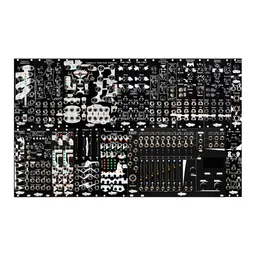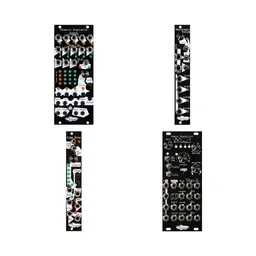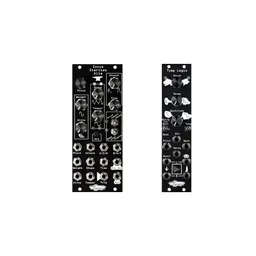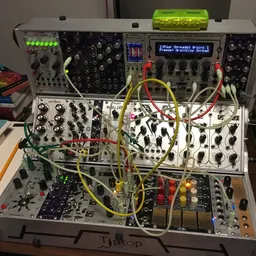The stereo phase-modulation inputs on our recently released Virt Iter Legio are unique and fun, but also may raise some questions. Today, we’ll explore phase modulation and talk about some basic modular patches to get you modulating the stereo field in no time.
What is phase modulation?
Phase modulation (henceforth referred to as PM) is a synthesis technique most often implemented in digital synthesizers. The concept is simple: use one (audio-rate) oscillator to modulate the phase of another oscillator, creating a timbral change in the modulated oscillator similar to that of FM. It’s a versatile technique that can be used for everything from bright, metallic sounds to distorted, inharmonic growls. In modular synths, it’s easy to patch phase modulation together if you have two oscillators (and one has that PM input). Where Virt Iter Legio shines is the stereo pair.
The simplest patch for phase modulation
The easiest way to start exploring VIL’s PM capabilities is with a second oscillator (any oscillator will do!) and an attenuator. Patch the oscillator through the attenuator and into the L PM input, and monitor the output of the VIL. The L PM input normals to the R input so if you want to modulate both channels with the same oscillator, it’s easy.
By changing the frequencies of the oscillators and the level of the attenuator you can drastically change the timbre of the sound, and changing the waveshapes of either oscillator will have a big effect, too. For more traditional sounds, using harmonically-simple waves like sines on both oscillators (try Bass mode with both knobs down on the VIL), or use things like saws and squares for aggressive basses and supersaws.
Voltage-controlled phase modulation
There are a number of ways that we can change the timbre of our PM patch using CV.
The most dramatic way is by sending separate pitch sequences to each oscillator: this changes the frequency relationship of the oscillators and each note of your sequence will have a different timbre.
In the previous section we used an attenuator to control PM level. If we replace the attenuator with a VCA we can control the timbre with an envelope, an LFO, or a sequencer. In my patches, I like to use a short decay envelope to modulate this VCA, then create a full voice by putting a second VCA on the output of the VIL controlled by a longer decay envelope. This creates a wonderful pluck each time the envelopes are triggered.

Of course, the last option is to CV-control Flavor or Tang on the VIL: this will change the waveshape of the oscillator, making a big difference in the overall sound. You can also use timbre-shaping utilities like filters and wavefolders to process the incoming oscillator, allowing for further timbral shifts and even more CV destinations.
Stereo phase modulation
VIL is particularly interesting since its left and right PM inputs can be modulated separately. A simple patch would be to use a multi-output oscillator and send different waveshapes to the L and R inputs – perhaps a saw to the L and a saw to the R. However, we can create dramatic stereo effects by modulating L and R with completely separate oscillators, and applying any of the above techniques to them. In this video, we have two oscillators going into the PM inputs on VIL, with different pitch sequences going into all three oscillators.






